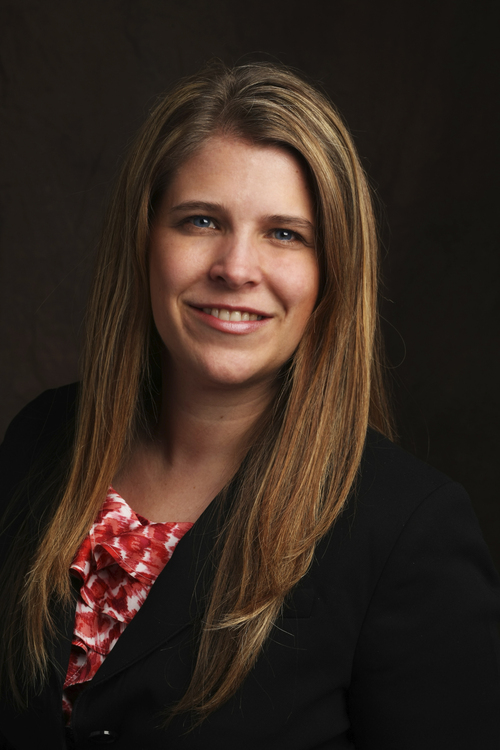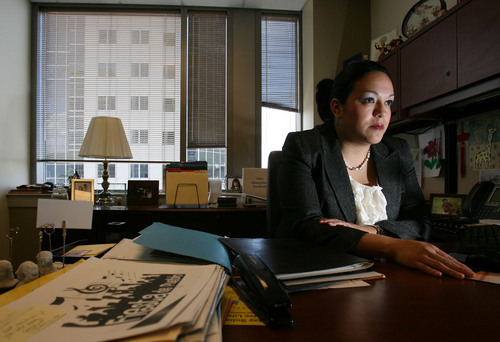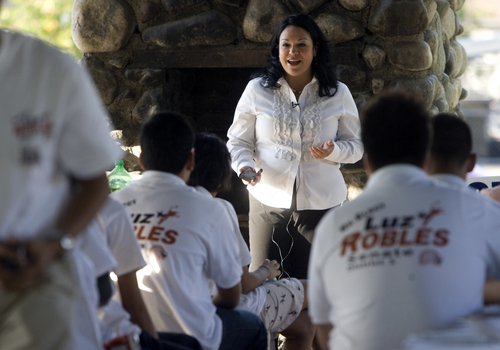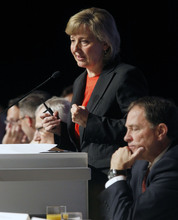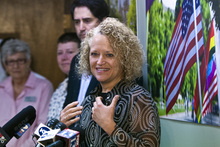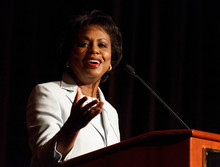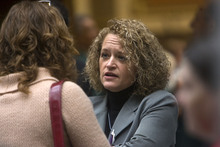This is an archived article that was published on sltrib.com in 2013, and information in the article may be outdated. It is provided only for personal research purposes and may not be reprinted.
Despite strides made in the past few decades, women still face substantial inequalities in areas critical to their well-being, a new report by the Center for American Progress says.
And disparities for women involving economic security, leadership and health issues exist between states, according to "The State of Women in America."
This study by the liberal think tank gives Utah an overall rank of 49 and an overall grade of F.
Some Utahns already have been trying to close the gaps in education, political involvement and other areas between women and men.
"It's concerning that Utah ranks so low," said state Sen. Luz Robles, who is part of Real Women Run, which is working to boost the number of women in elective office.
Among the 36 factors analyzed were the wage gap, the poverty rate, paid family leave laws, women in elective office, the management gap, the percentage of uninsured women, the defunding of Planned Parenthood and other providers' preventive health services, restrictive counseling and waiting-period restrictions on abortion and the maternal mortality rate.
In economic security, Utah ranks 43rd and was graded F. The state landed at 50th on leadership, also with an F, and ranked 34th on women's health and healthy families and given a D.
Authors Anna Chu and Charles Posner say their report serves as a stark reminder that although women have come a long way in the past century, much needs to be done to achieve "greater freedom, fairness, and equality for all."
"As we continue on the path to reaching this goal, we must keep in mind that we are not just improving the lives of women, but we are also improving the lives of their families and their children," they wrote. "Women and their families deserve a fair shot so that they can get ahead and not just get by."
On average, women fare the best in Maryland and the worst in Louisiana, according to the study. The Center for American Progress, which is based in Washington, D.C., describes itself as an independent — but progressive — nonpartisan educational institute.
—
On the job • In Utah, women make 70 cents for every dollar a man makes, compared to the national average of 77 cents — a situation that the center's report attributes to unfair pay practices. If the minimum wage were raised to $10.10 an hour, more than half of the beneficiaries in the United States, including 57.6 percent in Utah, would be women.
The state does better with poverty rates. Nationally, 16.3 percent of women live in poverty, while 13.6 percent of Utah women and girls do, the same percentage as the national average for men.
Lecia Parks Langston, a senior economist with the Utah Department of Workforce Services, said women across the county do less well economically than men because they make less money and tend to choose occupations that are lower paying. A substantial portion of them work part-time, she said, partly because women tend to be the primary caregivers of children.
Utah has a higher than average percentage rate of working women because of its young labor force but also has the largest college education gap in the nation, according to Langston.
Early marriage is one factor: Men are still likely to continue their studies, while women are not as likely to do so, she said. And jobs that require more education, such as those in the science and engineering fields, tend to pay more.
"Where we have a college education gap, it comes as no surprise that we have a large wage gap," Langston said.
In addition, Utah women have been slower to move into non-traditional jobs, such as in the construction trades, which also pay more.
Langston says changing unrealistic expectations of girls and young women and helping them understand the importance of getting an education is key. When she talks to groups of girls, "there's still that expectation they're not going to work," even though the majority of them have mothers who are employed outside the home, she said.
—
Politics • In the leadership area, Real Women Run also is trying to change expectations. The group is working to increase the number of women serving in elective offices in Utah and in policy-making jobs.
The state is one of just five with no women in Congress or statewide elective office. Nationwide, women make up 24 percent of state legislators, while they hold 16.3 percent of the seats in the Utah Legislature.
Former state Rep. Jackie Biskupski, who helped start Real Women Run in 2010, said culture is one reason women don't run for election or seek a spot on a policy-making commission.
"Women have been taught that their place is to be at home and to raise the children and they feel like they can't do both," said Biskupski, who now is part of Salt Lake County Sheriff Jim Winder's administration.
But when they do run — often when they're motivated by a particular issue — women do well and are glad they did it, she said.
Robles, a candidate for Congress, agreed that women tend to worry about balancing family, work and public service. Economics also influences the decision, she said, because a legislative position is part-time so officeholders have to stretch their income and have enough flexibility in their full-time jobs to serve.
Real Women Run provides encouragement and training seminars to help them win. Robles, a vice president for Zions Bank, said the business community provides similar support through mentoring and other programs, although there is still more to do.
—
Business leaders • The Center for American Progress says women in Utah also are lagging in leadership roles in the private sector, where they hold 31.8 percent of managerial jobs — the third-worst showing in the nation, where overall, women hold 38 percent of those spots.
That figure comes as no surprise to Jonyce Bullock, the only woman among 15 partners at Squire & Company, an Orem-based accounting firm.
Although 60 percent of accounting graduates nationally are women, only 44 percent of staff-level accountants are female, she said. The numbers drop in Utah, with schools reporting 18 percent to 30 percent women in accounting, she said.
"We don't even have the same pipeline coming out of schools," said Bullock, who supervises her company's Advisory Department.
The women who do graduate with accounting degrees sometimes don't engage fully in their profession because they plan to get married or start a family soon, Bullock said.
And they often do not have many opportunities for informal mentoring because male partners sometimes feel uncomfortable inviting a woman to lunch or to play golf, Bullock said.
The solution includes setting up formal mentoring programs and discussing ways to guide women in their careers, she said.
"We have to talk about it," Bullock said. "I don't think anything will change unless we admit there's an issue. We should just begin the conversation."
Twitter: @PamelaMansonSLC —
Women in Utah
Leadership
• Politics — Utah is one of just five states that have no women in Congress or statewide office, and female members make up just 16.3 percent of the state Legislature (although it does have a female House speaker in Becky Lockhart.
• Business — Just 31.8 percent of management jobs were held by women, third lowest portion in the nation.
Economics
• Poverty — 13.6 percent of Utah women and girls live in poverty. Utah fares better than all but 12 other states.
• Low wage — Women make up 57.6 percent of the segment of Utah's workforce making less than $10.10 per hour.
• Wage gap — Women make, on average 70 cents for every dollar earned by men in Utah — the fourth biggest wage gap nationally.
Health
• Insurance — 15.2 percent of non-elderly Utah women are uninsured, about in the middle of the pack nationally.
• Infant mortality — Utah's infant mortality rate is 4.86 percent — better than all but nine states.
• Contraceptives — Public funding supports just 28 percent of the contraceptive services needed, less than all but 14 other states.
Source: The State of Women in America, Center for American Progress


